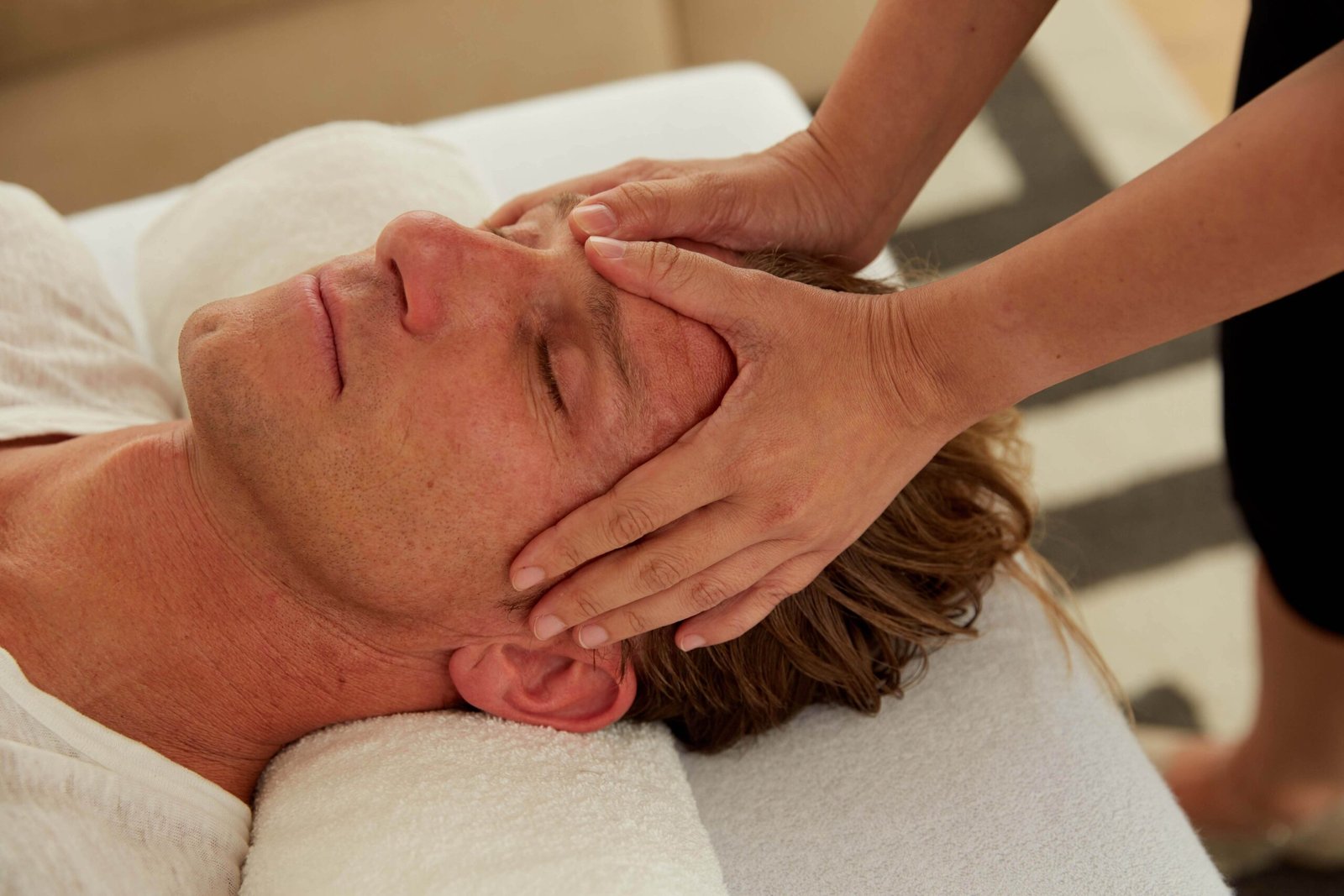Migraines can feel unbearable, can’t they? If you’ve ever had one, you know what I mean. They’re not just headaches. They can knock you off your feet, ruin your plans, and leave you searching for any relief. I’ve been there, and that’s why I want to talk about something that has worked for me—massage for migraine.
Let’s explore this together massage for migraine. I’ll share what I’ve learned, how it helps, and tips to make it work for you.
How Massage Helps with Migraines
When you think about migraines, the first thing that comes to mind might not be massage. But it should be. Here’s why.
- Reducing Muscle Tension
Migraines often come with tight muscles. When my neck and shoulders feel stiff, it’s like an invitation for a migraine. Massage relaxes these muscles. It’s almost like melting away the tension that could trigger pain.
A gentle rub on your temples or a firm massage on your neck can work wonders. For me, it’s a game-changer.
- Improving Blood Circulation
Did you know poor blood flow can make migraines worse? I didn’t either until I tried massage. It increases circulation, bringing oxygen to areas that need it most. Better circulation means less pain and more relief.
- Reducing Stress Levels
Stress and migraines go hand in hand. When I’m stressed, migraines are more likely to strike. Massage lowers cortisol levels—that’s the stress hormone. A good massage feels like your body is saying, “Thank you!”
Types of Massage for Migraine Relief
Not all massages are the same. Some work better for migraines than others. Let me break it down for you.
- Trigger Point Therapy
This one’s my favorite. A massage therapist focuses on specific points in your muscles. These points, or “knots,” can refer pain to other areas—like your head.
I’ve had a therapist press on a spot on my shoulder, and instantly, my head felt lighter. It’s amazing how connected everything is.
- Swedish Massage
If you want relaxation, this is for you. Swedish massage uses long, gentle strokes to reduce tension. It’s not as targeted as trigger point therapy, but it’s perfect when stress triggers your migraines.
- Craniosacral Therapy
This one is more subtle. It involves gentle pressure on your head, neck, and spine. It helps with the flow of cerebrospinal fluid. I found it surprisingly soothing, especially for tension-related migraines.
- Reflexology
Ever had your feet massaged and felt it everywhere? Reflexology is like that. Certain points on your feet connect to other areas of your body. A therapist presses these points to relieve headache symptoms. It’s like magic.
How to Use Massage at Home
Sometimes, you can’t get to a professional. That’s okay. You can still try self-massage. Let me show you how.
- Temple Massage
This one’s easy. Use your fingertips to gently rub your temples in circular motions. I do this when I feel a migraine coming on. It’s simple, quick, and works well.
- Neck and Shoulder Massage
Tension in the neck often leads to headaches. Take your hands and knead the muscles at the base of your skull. For me, this helps stop a migraine in its tracks.
- Scalp Massage
Your scalp can hold a lot of tension. Use your fingers to press and move in small circles all over your head. It’s like giving yourself a relaxing treat.
Choosing the Right Massage Therapist
If you decide to see a professional, choose wisely. Here’s what to look for:
- Experience with Migraines: Not all therapists understand migraines. Ask if they have experience.
- Techniques Offered: Look for someone skilled in trigger point therapy or craniosacral therapy.
- Comfort Level: You need to feel comfortable. A good therapist listens to your needs.
Tips to Get the Most Out of Your Massage
A massage can do wonders, but there are ways to make it even better.
- Stay Hydrated: Drink water before and after. It helps flush out toxins.
- Communicate: Tell your therapist what feels good and what doesn’t.
- Rest Afterward: Give your body time to absorb the benefits.
My Personal Experience
I remember my first migraine massage like it was yesterday. I walked into the room with a pounding head and tight shoulders. The therapist asked me about my symptoms and focused on my neck and temples.
By the end, I felt lighter, and the pain was manageable. It wasn’t a miracle cure, but it was a huge relief. Since then, massage for migraine near me wake forest nc, has become part of my routine.
FAQs About Massage for Migraines
- Does massage cure migraines?
No, but it helps manage symptoms. It’s not a cure, but it can reduce pain and prevent attacks.
2. How often should I get a massage?
It depends on your needs. I go once a month, but you might need more or less.
3. Can massage make migraines worse?
Rarely, but it can if done incorrectly. Always choose a trained therapist.
If you’ve struggled with migraines like I have, you know how frustrating they are. Massage might not be the first thing you think of, but it’s worth trying. Whether it’s a professional session or a quick self-massage, it can bring real relief.
You don’t have to live with the pain. Give massage a try and see how it helps. It’s made a big difference for me, and it might do the same for you.








